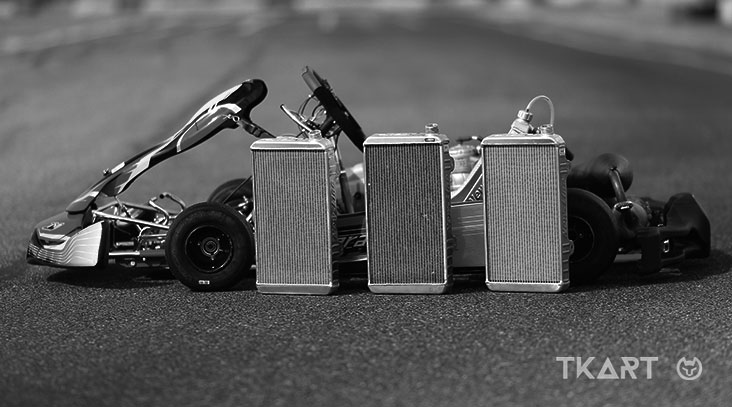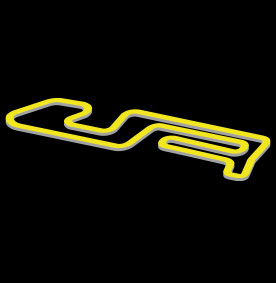SURFACE AREAS
Speaking of radiator cores, the first variable that influences their performance is undoubtedly the size of the radiator core itself. Purely theoretically, the larger the surface area, the greater the ability to exchange heat. In this test, the surfaces of the cores were not a variable, but a fixed constant. Indeed, the 3 radiators tested all had the following measurements:
- Width 245 mm
- Height 420 mm
Those are the dimensions of the RS model radiator in the New-Line Racing range, a size “M”, so to speak.
What changed were the other elements, which you can see by clicking on the buttons on this slide, as well as the thickness, which varied by 5 mm depending on the core.
TUBES
In order to flow from the upper to the lower end of the radiator, water moves through long, thin ducts called tubes. They are positioned side by side at a set distance. They can be [1] single or [2] dual, meaning there can be a tube that measures the total thickness of the radiator, or there can be two tubes, one front and the other rear, spaced apart. The number of tubes and their dimensions obviously influence the radiator's ability to dissipate heat. In theory, dual tubes allow air to make contact with a greater surface area. Incoming air makes contact with the first tube and is then channeled into the space between the first and the second tube. Subsequently, the flow of air also makes contact with the second tube, dissipating the heat more evenly along the entire thickness of the radiator.
FIN PITCH
Fins can be set at a variable angle of inclination, so they can be more or less close together. One of the accepted ways used to measure fin pitch is to check the number of millimeters spanning 20 fins. The greater the measurement, the greater the angle between the individual fins and the greater the space taken up, in terms of mm, of the 20 fins. Given the same radiator height, "flatter" and closer fins have the advantage of being present in greater numbers compared to fins that are less close together. On the other hand, however, fins that are too close together mean that there is less penetration by air, which has a hard time getting through them, thereby decreasing the capacity for heat exchange of the radiator itself.
FIN WIDTH
The width of the fins - and the consequent distance between the tubes - also affects the fundamental characteristics of a radiator core and its performance. Having narrower fins allows - given the same overall radiator width - more tubes for the flow of water from top to bottom. The greater the number of tubes, the greater the surface area that comes into contact with the air and is capable of exchanging heat. This, however, contrasts the fact that the narrower the fins and the closer the tubes are, the harder it is for air to pass through the radiator. Therefore, as for the previous variables, it’s a matter of finding the right compromise between the various elements that make up a radiator core.
 Exclusive Content
Exclusive Content




